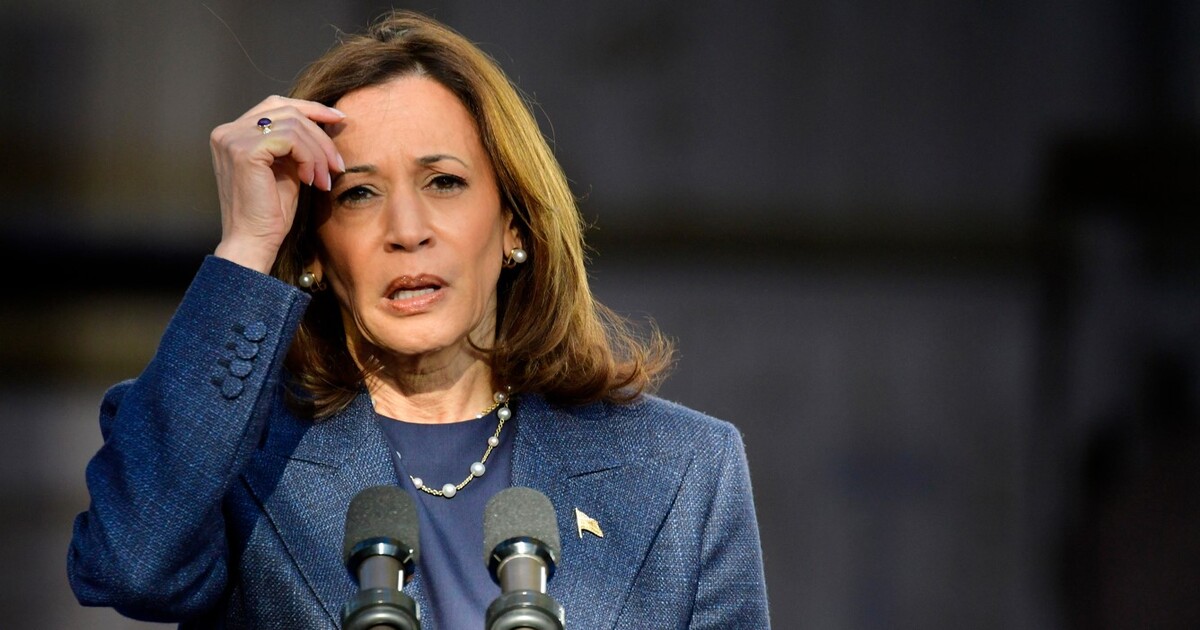Where Did the Democrats Go Wrong?
How Kamala Harris lost to Donald Trump.
November 17, 2024

A Strategic Intervention Paper (SIP) from the Global Ideas Center
You may quote from this text, provided you mention the name of the author and reference it as a new Strategic Intervention Paper (SIP) published by the Global Ideas Center in Berlin on The Globalist.
Why did Kamala Harris and other Democrats get hammered at the polls, despite Donald Trump’s glaring flaws?
The core problem is that Democrats have forgotten how to talk to Americans who don’t go to college. That’s 60% of voters. Democrats have alienated many working-class and lower middle-class Americans, their original constituency.
Too many Democratic leaders and activists have focused on identity issues, rather than economic concerns. They have given too much emphasis to “social justice” initiatives and transgender rights, which are priorities for highly vocal segments such as Black and LGBTQ groups. That approach turns off white voters and, increasingly, Latino voters. That’s no way to win elections on the national level.
A wake-up call
Up until this election, many Democrats believed that they could form a dominant coalition based on college-educated Americans and minority groups. They assumed that “demographics is destiny,” so America would inevitably become more Democratic as its population became more mixed racially. Nope.
The Democratic Party must revamp and redefine itself, so it can appeal to a broader range of Americans. That does not mean that the party must abandon its core values. But Democrats should change their tone and pick their fights more carefully.
The Democratic Party should return to its roots as the champion of all working-class and middle-class Americans. Democrats should avoid taking steps that are guaranteed to antagonize white working-class and middle-class voters. The Democratic Party should become a Big Tent again, not a group of huts for identity groups.
A rout but not a landslide
Trump swept the Electoral College and won the popular vote, but he did not get a landslide. In fact, Trump did not win many more votes than he did in 2020.
The problem for Harris was that on Election Day many Democrats and independent voters stayed home or split their ballots. This was the nightmare scenario for Democrats. As a result, Harris received 11 million fewer votes than Biden did in 2020.
Like most recent Presidential elections, this one was narrow. Trump’s margin of victory was 2.7%, less than Biden’s 4.4% in 2020. Trump won by about 4 million votes vs. 7 million for Biden in 2020.
Democrats should not panic. They were beaten soundly, but not by an unusually large margin. If they take corrective action, Democrats can work their way out of the political wilderness.
A string of populist revolts
As the incumbent party, the Democrats faced steep obstacles to winning this election.
The aftershocks of the Covid pandemic and high levels of immigration have triggered populist revolts in virtually all major democratic regimes. Governments in numerous Western European countries — France, the Netherlands, the UK—have been thrown out of office, or lost their majorities, because voters are angry about inflation and immigration.
The handwriting was on the wall, in capital letters, for all to read. Democrats should have realized that these issues would also dominate the U.S. election and faced them head-on. However Joe Biden and then Kamala Harris ducked or glossed over these issues.
Mission impossible for Harris
Democrats faced additional hurdles in the United States. Biden set the party up for failure by refusing to step aside, even though he was deeply unpopular. Biden should have let younger candidates compete for the nomination, which would have fired up the Democratic base and might have produced a stronger candidate than Harris. Governors Josh Shapiro (PA) and Gretchen Whitmer (MI) come to mind.
Still, Harris performed better than expected,. While aspects of her campaign were impressive, Harris had very little time to campaign, and she made some major strategic mistakes. Harris emphasized abortion rights and protecting democracy, instead of tackling the two key issues. It was painful to watch her dodge questions about inflation and immigration during her TV interviews.
And her argument to bring back the “joy” in politics did not resonate with voters who were upset about high prices.
We cannot overlook a basic issue: Democrats took a huge risk by nominating a candidate who was a woman and Black/Asian. They knew that Trump, a skilled demagogue, would run an ugly, racist, and sexist campaign against Harris. Well, his approach worked.
Now for the longer-term challenges.
The big picture
Three major trends have dominated U.S. politics for decades:
1. Working-class whites’ real wages have fallen, as manufacturing jobs moved abroad
2. Whites have decreased to about 60% of the population, which reinforces white working-class Americans’ resentment about their decline in status
3. Minorities and “identity” groups have driven much of the Democratic Party’s agenda
Over the last 10 years, Donald Trump has deftly wooed working-class voters by playing on their fears and their anger at coastal elites. Trump knows that racism and ethnic hatred are a powerful “sell” with many voters…and he relishes splashing around in the gutter.
Furthermore, in this election, Trump picked up much more support from Latino men. They reacted and voted like working-class men, rather than members of an ethnic group. And yes, machismo probably also played a significant role, but not just for Latino men.
A welcome mat for the white working class
The irony is that Joe Biden has been the most pro-labor U.S. President since Franklin Roosevelt. Biden’s infrastructure program and green-energy initiatives are generating a lot of well-paying blue-collar jobs. He was the first President to stand on a picket line, when he supported the United Auto Workers strike.
However, as President, Trump did nothing for the working class, in practical terms. In fact, his Administration pursued a distinctly anti-labor agenda. But Trump treated white working-class voters with respect, which made them feel good.
The Democratic Party must make white blue-collar workers feel welcome again. That means changing how the Party describes itself and sets its priorities—and ruffling some feathers.
Who’s the backbone of the party?
The New York Times recently described black women as the “backbone” and the “beating heart” of the Democratic Party. Biden and other Democratic leaders have often spoken in these terms.
It is true that black Americans and black women are a key constituency. They are loyal supporters, and they work hard on political campaigns. But the core of the Democratic Party?
Going into this election, 60% of Democrats were white and 20% were black. Furthermore, black Americans are just 14% of the population. If only 7% of Americans — black women — are the “backbone” of the party, then Democrats have a real problem.
When Democrats like Biden use that kind of language, they turn off white voters. The implicit message, whether intended or not, is you don’t count.
Pandering to minorities
Biden compounded this problem when he announced in 2019 that he would pick a black woman as his candidate for Vice President. That certainly looked like pandering to a specific racial group. Why didn’t Biden say that he would pick the best candidate? Why did he turn this crucial decision into a DEI exercise? (Diversity, Equity and Inclusion).
Similarly, as speculation rose this summer that Biden would drop out, several pundits argued that Harris had to be the nominee, because otherwise black women — and women in general — would be offended. So what?
Vice Presidents have no divine right to be nominated their party’s candidate for President. Just ask Joe Biden. When he was VP, having served faithfully for eight years, President Barack Obama had no qualms telling Biden that Hillary Clinton would be the nominee. Doesn’t that look like a double standard?
Early in his Presidency, Biden pushed through a special lending program for Black farmers. In an unusual provision, the program specifically authorized bureaucrats to forgive loans if the farmers got into economic trouble. White farmers were outraged, justifiably, because they were not entitled to such treatment under standard agricultural programs. A federal court eventually nullified the program.
Sparking white backlash
Harris made a similar blunder. Late in her campaign, as she realized that Trump was cutting into her support among black men, Harris released a plan targeted at black entrepreneurs, which also involved loan forgiveness. Do you think that move endeared her to white working-class voters?
These criticisms may strike you as unfair. After all, President Trump blatantly rewarded his followers and punished his enemies. Trump showered his rich donors with massive tax cuts. Trump cruelly withheld federal relief funds from Puerto Rico and California, which he regarded as Democratic bastions.
The problem for Democrats is that their special treatment of minorities sparks resentment among whites, particularly working-class and lower-middle class whites. That imposes a heavy political cost on the party.
Handouts for the professional class
As college-educated professionals have come to dominate the Democratic Party, its politicians have provided special programs for them, including bailouts. This myopic and unfair approach has alienated blue-collar workers. Student loans are a prime example.
Some relief is needed. Many borrowers with student loans are struggling. Some institutions, notably certain for-profit colleges, exploited naïve students. The government should lighten the burden for some borrowers.
But the student loan issue became a loyalty test for Biden. Younger voters — a key bloc for Democrats — were convinced that they were entitled to relief from their debt obligations as a matter of fairness. Some groups argued that forgiveness was required especially for black borrowers as a matter of “racial justice”, because they had unusually high default rates.
The problem was that Biden’s executive order proposed across the board relief for a broad range of borrowers, including solvent ones. Independent analyses showed that the program would be a bail-out for many affluent professionals (lawyers, bankers etc.) and they would reap most of the benefits. Furthermore, the cost—which taxpayers would bear — would be enormous.
This initiative was an overreach by Biden and the Supreme Court nullified his executive order.
Imagine that you are a blue-collar man or woman, making $50,000-$70,000 a year. You have a mortgage, a credit card and a car loan. You have trouble making ends meet each month, but you pay all your debts. Why should the government bail out the rich kids who sit in air-conditioned offices all day?
Going overboard on transgender rights
LGBTQ groups have acquired a loud voice within the Democratic Party and pushed the party to adopt some unpopular positions—notably on transgender rights. This gave the right-wing an easy target in the latest election and Harris fell into the trap.
Democrats must pick their fights more carefully. Protecting the right to enter a same-sex marriage should be a priority. But fighting for the “right” of transgender athletes to play on a girls’ team is a loser, politically, for two reasons.
First, males have more upper body strength, so allowing a former male to compete on a female team offends many Americans’ sense of fairness. Second, transgenders are a tiny percentage of the population, perhaps as low as 0.5%.
This is not a hill that Democratic candidates should pick to fight and die on. Many Americans — white, Black and Latino — are very uneasy about transgender issues, either because of religious convictions or social conservatism.
Democrats should try to protect those who want to undergo transgender treatment, which is a difficult decision and a painful process. But they don’t have to shout this from the rooftops.
Politics and the Spanish language
Democrats offended Latinos by insisting on using “Latinx”, a gender-neutral adjective, as part of their drive to support gay rights. But this new-fangled adjective clashes with the fundamental logic and structure of the Spanish language, which, like all Romance languages, always distinguishes between masculine and feminine. It does not help that the letter “x” rarely appears in Spanish.
Not surprisingly, very few Hispanic Americans — perhaps 2% — use this term. Democrats should back off and respect Hispanic language and culture.
Latinos: It’s the economy
Harris and other Democrats ignored polls showing that for most Latinos, as for other working-class Americans, the key issues were the economy and inflation. Latino men (but not women) shifted sharply to Trump in this election, which played an important role in Harris’ defeat. Harris did not even win in Nevada, a traditionally Democratic state with many Latino and union voters.
Many Democrats assumed that Trump would alienate Latinos with his vicious lies about immigrants rampaging in America towns and cities. They thought that Mexican Americans, who represent 60% of Latinos, would be particularly infuriated by Trump’s calling Mexican immigrants “rapists and murders” and his threat to deport millions of people.
However, many Latino voters do not think that Trump is talking about them when he attacks “immigrants”. These voters are, by definition, U.S. citizens. Most of them are second or third-generation Americans.
Like most Americans, many Latino voters want the government to stop illegal immigration. They don’t think it is fair to those who have come to the US legally. Many Hispanics may also have swallowed Trump’s lies that illegal immigrants are taking Black and Latino jobs.
Still, Democrats can win back Latinos with the right message, because they share some important values with Democrats. Most Latinos favor a path to citizenship for the 11-12 million undocumented immigrants, and most of them want reasonable access to abortions. They support strong gun controls.
No time for despair
Democrats have suffered a major defeat, but they can make a comeback if they tack back to the center and downplay identity politics. Trump’s policies are backward-looking; he has not proposed intelligent solutions for the nation’s problems. If Democrats change course, they can win voters back when Trump fails to improve their lives.
Takeaways
Democrats should not panic. They were beaten soundly, but not by an unusually large margin. If they take corrective action, Democrats can work their way out of the political wilderness.
Harris performed better than expected, and many aspects of her campaign were impressive. However, Harris had very little time to campaign, and she made some major strategic mistakes.
Democrats have suffered a major defeat, but they can make a comeback if they tack back to the center and downplay identity politics.
The problem for Harris was that on Election Day many Democrats and independent voters stayed home or split their ballots.
The irony is that Joe Biden has been the most pro-labor U.S. President since Franklin Roosevelt. He was the first President to stand on a picket line, when he supported the United Auto Workers strike.
A Strategic Intervention Paper (SIP) from the Global Ideas Center
You may quote from this text, provided you mention the name of the author and reference it as a new Strategic Intervention Paper (SIP) published by the Global Ideas Center in Berlin on The Globalist.


